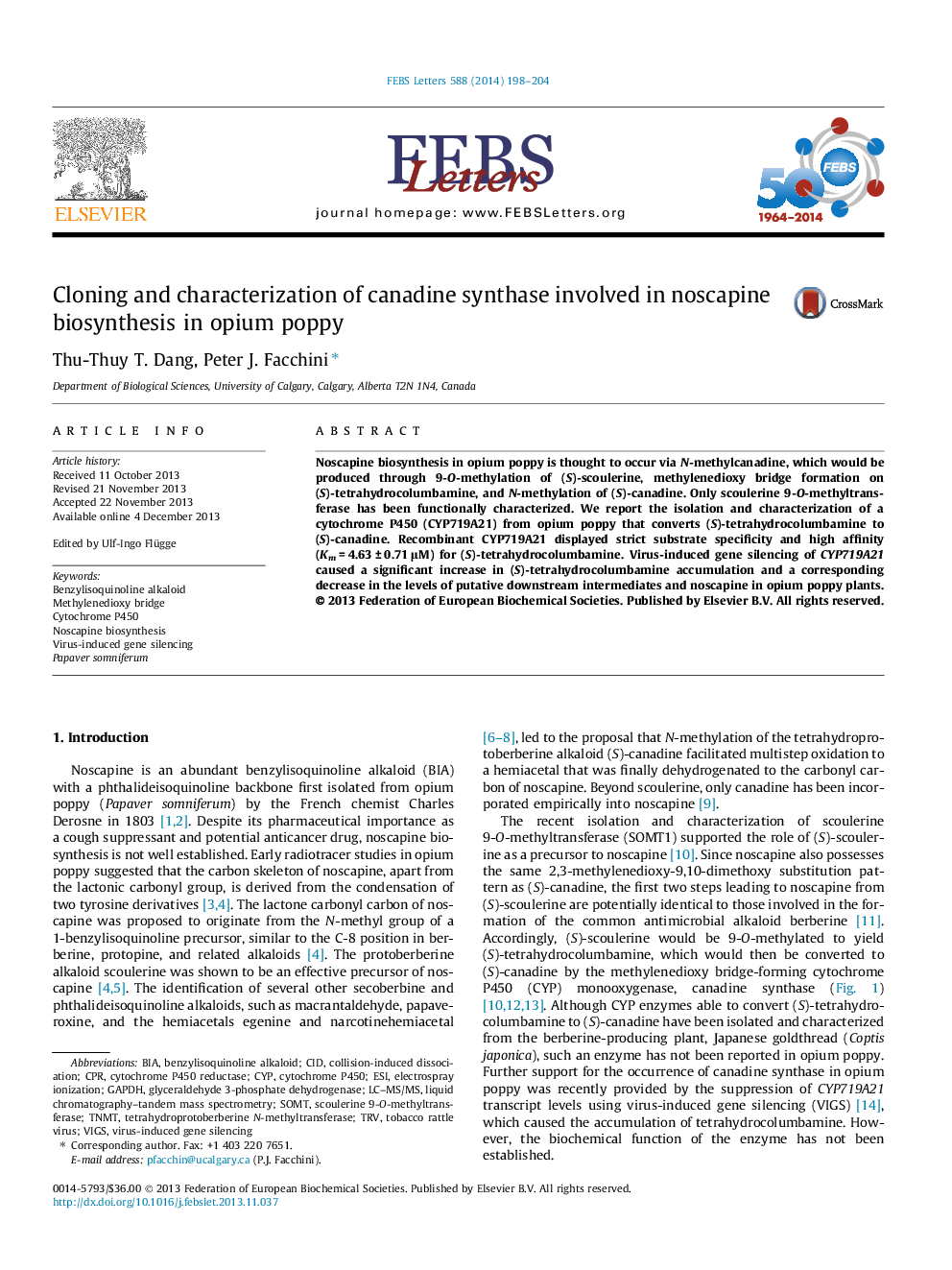| Article ID | Journal | Published Year | Pages | File Type |
|---|---|---|---|---|
| 10870646 | FEBS Letters | 2014 | 7 Pages |
Abstract
Noscapine biosynthesis in opium poppy is thought to occur via N-methylcanadine, which would be produced through 9-O-methylation of (S)-scoulerine, methylenedioxy bridge formation on (S)-tetrahydrocolumbamine, and N-methylation of (S)-canadine. Only scoulerine 9-O-methyltransferase has been functionally characterized. We report the isolation and characterization of a cytochrome P450 (CYP719A21) from opium poppy that converts (S)-tetrahydrocolumbamine to (S)-canadine. Recombinant CYP719A21 displayed strict substrate specificity and high affinity (Km = 4.63 ± 0.71 μM) for (S)-tetrahydrocolumbamine. Virus-induced gene silencing of CYP719A21 caused a significant increase in (S)-tetrahydrocolumbamine accumulation and a corresponding decrease in the levels of putative downstream intermediates and noscapine in opium poppy plants.
Keywords
TRVBIAGAPDHCyPCIDESILC–MS/MSBenzylisoquinoline alkaloidCPRCollision-induced dissociationVIGScytochrome P450 reductaseCytochrome P450Tobacco rattle virusvirus-induced gene silencingPapaver somniferumliquid chromatography–tandem mass spectrometryglyceraldehyde 3-phosphate dehydrogenaseelectrospray ionization
Related Topics
Life Sciences
Agricultural and Biological Sciences
Plant Science
Authors
Thu-Thuy T. Dang, Peter J. Facchini,
